Does it take four days to load or is it simply not working? I finally went back to the main Nick page, found The Penguins link: it loaded the page but not the peek.
The Penguins of Madagascar
- AV Forum Member

- Posts: 1991
- Joined: December 16th, 2004
- Location: Burbank, Calif.
I actually quite enjoyed it. 
It's definitely not up to the 'quality' level of the movies -- or even the Christmas Caper short -- but, by TV animation standards, it's really very nicely-done; lots of snappy 'pose-to-pose' animation .. nice compositions .. and even a lovely backdrop, on occasion (such as that New Jersey junkyard). Plus, it was fun & funny!
I am a bit disappointed that they're apparently not picking up where Escape 2 Africa leaves off ..
At the very least, The Penguins of Madagascar looks to be better than Dreamworks' Father of the Pride TV series ..
.. though, I agree; "The Madagascar Penguins:" (as they were called in the main title sequence of A Christmas Caper, IIRC) does 'sound' better.
It's definitely not up to the 'quality' level of the movies -- or even the Christmas Caper short -- but, by TV animation standards, it's really very nicely-done; lots of snappy 'pose-to-pose' animation .. nice compositions .. and even a lovely backdrop, on occasion (such as that New Jersey junkyard). Plus, it was fun & funny!
I am a bit disappointed that they're apparently not picking up where Escape 2 Africa leaves off ..
.. though, I agree; "The Madagascar Penguins:" (as they were called in the main title sequence of A Christmas Caper, IIRC) does 'sound' better.
- AV Forum Member

- Posts: 10081
- Joined: September 1st, 2006
Yah.droosan wrote:(as they were called in the main title sequence of A Christmas Caper, IIRC)
Glad you enjoyed it. I saw again yesterday and found it more enjoyable actually. How the characters look is what bothered me more, the background and sights are quite nice.
Ben, here it is two parts:
Enjoy!
Oh yeah, and Danny Jacobs does a good King Julian - wow, very close to my two names, huh?
- AV Founder

- Posts: 25910
- Joined: October 22nd, 2004
- Location: London, UK
I seem to be one of the few that can take or leave King Julian, but there's a lot of mileage in those Penguin guys...as long as it's basically not going to be the same routine played out every time (which it looks like it might well be).
If that's the case, the joy will be in the nuances, but I look forward to catching the shorts on an eventual DVD release rather than try and chase it around the UK schedules.
I think this dragged a bit for a 12 minute cartoon...like the Furious Five short these might be better at half the length, but I don't mind the simplified characters and I'm suitably impressed at the animation for television standards...looks like they factored in DVD sales in how much they could spend.
If that's the case, the joy will be in the nuances, but I look forward to catching the shorts on an eventual DVD release rather than try and chase it around the UK schedules.
I think this dragged a bit for a 12 minute cartoon...like the Furious Five short these might be better at half the length, but I don't mind the simplified characters and I'm suitably impressed at the animation for television standards...looks like they factored in DVD sales in how much they could spend.
- AV Founder

- Posts: 25910
- Joined: October 22nd, 2004
- Location: London, UK
- AV Founder

- Posts: 8380
- Joined: October 16th, 2004
- Location: Orlando
- Contact:
- AV Forum Member

- Posts: 10081
- Joined: September 1st, 2006
And I thought I was being a little harsh since I noticed the penguins aren't as cute as they usually are. 
That's actually a good way of describing it James, like a video game cut-scene.
I think Back at the Barnyard looks better and closer to its movie (Barnyard) than the Penguins do from their respective appearances, be it the Mad films or their X-Mas short.
That's actually a good way of describing it James, like a video game cut-scene.
I think Back at the Barnyard looks better and closer to its movie (Barnyard) than the Penguins do from their respective appearances, be it the Mad films or their X-Mas short.
- AV Forum Member

- Posts: 1991
- Joined: December 16th, 2004
- Location: Burbank, Calif.
That's partly because the Barnyard movie was made with the TV series in mind (director/creator Steve Oedekerk wanted to repeat the formula which had worked for Jimmy Neutron: use the movie to 'springboard' directly into a TV show).Daniel wrote:I think Back at the Barnyard looks better and closer to its movie (Barnyard) than the Penguins do from their respective appearances, be it the Mad films or their X-Mas short.
The character and environment assets for Barnyard were designed to be used in a Softimage pipeline, primarily because the Indian studio (which had already been selected to produce the Back at the Barnyard series) was set-up for Softimage. Thus, the models and rigs used on the TV show are largely the same as the ones used in the film.
Also helpful toward ensuring a consistency between the Barnyard movie and the TV series was the fact that O-Mation retained a small part of the movie's key artist staff (after the movie's completion) to create 'episode-specific' designs & assets for the show .. which were then given over to the studio in India, where the animation is done.
By contrast, I rather doubt that there are many artist personnel in common between the Madagascar movies and the Penguins TV series. It's also doubtful that there is much consistency between the animation and rendering pipelines for either project; TV series budgets and schedules tend to be brutally small by comparison with an animated feature (on a 'dollars-per-screen-minute' scale) .. so, less-complex animation rigs and quicker render times are a necessity.
The realistic fur, feather, and cloth simulations which give the Madagascar movie characters much of their 'warm fuzziness' appeal are simply not cost-effective on a TV budget (we used fur sparingly in the Barnyard movie because we knew it could not be replicated effectively in the TV show). The lighting and shading for the TV show is likewise 'simplified' from what is seen in the features. The tendency for shadows to be a bit sharper, and to actually fall into blacks, is responsible for much of the 'cheapness' some have perceived. This is because it is a cheap method of shading; the computing power to fill-out and soften those shadows with radiosity simulation is not worth the substantial extra render time it would require.
Where The Penguins of Madagascar premiere episode really shines is in its animation, which -- while not quite as 'refined' as its feature-length cousin -- retains much of the zingy 'pop-and-snap' motions which make the Penguins so much fun to watch in the first place. Compare it to other 'made-for-TV' full-CG fare, and you'll see it's really quite nice. The sound design is also excellent; the 'zing-zoom-swish' effects the Penguins make as they move compare very favorably with what we're used to seeing in the features. I also got a giggle out of the timing for the deflated 'squeak' made by Kowalski's pen, when Skipper tells him that Doris the Dolphin doesn't 'like' him.
BTW, one of the reasons A Christmas Caper looks so nice is because its crew was composed of many of the same Dreamworks artists who had worked on the feature, and because its model, render and shading pipelines were basically the same which had been used for the films. That it was roughly a quarter of the running-time of a single Penguins TV episode also helped its economy of scale. :idea:


